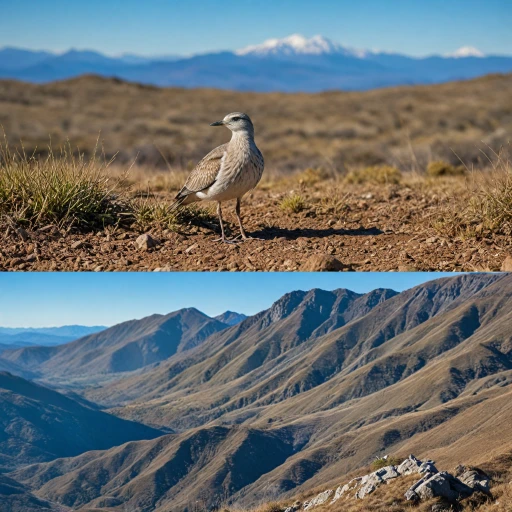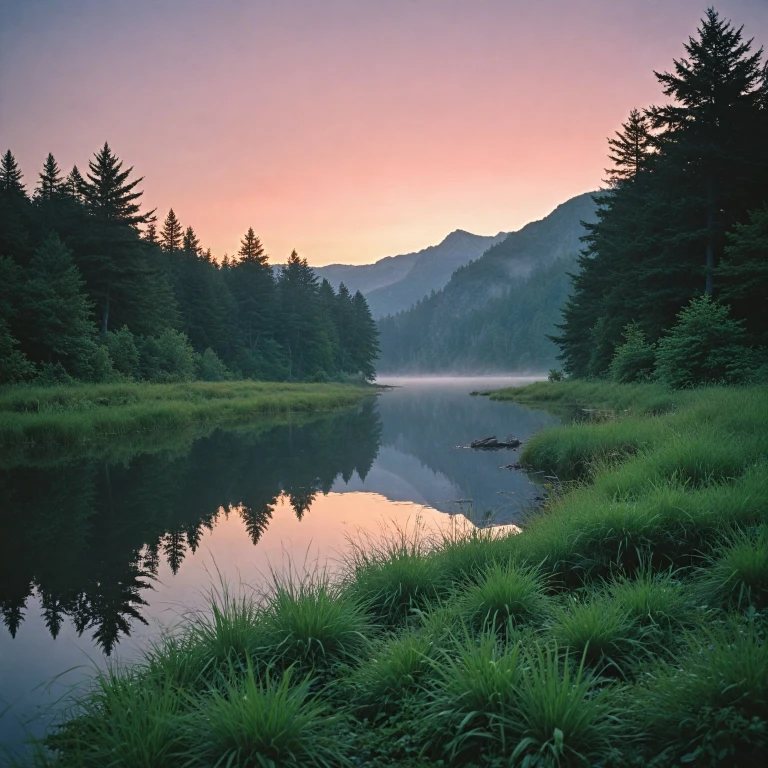Understanding Lens Specifications for Nature Videography
Decoding Key Lens Features
When it comes to nature videography using the Sony a6400, understanding lens specifications can drastically improve your footage quality. One of the first things to consider is the focal length. For capturing wide panoramic landscapes, a wide-angle lens facilitates extensive field coverage, enriching the image with environmental context. However, if you're aiming to zero in on distant subjects, a telephoto lens is invaluable for compressing the scene and emphasizing details.
Aperture plays a crucial role in your gear selection as well. A fast aperture, such as an f/2.8, allows more light to hit the sensor, which is beneficial for shooting in low light scenarios—common in nature photography.
Image stabilization, often indicated by the term OSS (Optical SteadyShot) in Sony lenses, ensures reduced camera shake, crucial for hand-held shots without a tripod. This functionality can be a game-changer for maintaining footages with smooth transitions.
For those keen on exploring variety and versatility in focal ranges, zoom lenses present an excellent choice. They allow you to switch from wide angle to telephoto instantly with a simple twist of the barrel. If budget constraints are a consideration, determining the best price-to-performance ratio could lead you to explore models like the Sigma 18-50, known for offering great optical quality at an accessible price point.
Explore further for a closer look at its versatility.
Ultimately, choosing the right lens involves balancing multiple criteria including light conditions, focal length flexibility, aperture size, and image stabilization, which all influence the final image quality.
Top Lens Recommendations for Sony a6400
Top Choices to Elevate Your Sony a6400 Experience
When it comes to capturing breathtaking nature shots with the Sony a6400, choosing the right lens can significantly impact your results. Listed below are some recommended lenses that stand out for their performance in nature videography.
-
Sony 16-55mm f/2.8 G: This zoom lens offers a versatile focal range equivalent to 24-82.5mm, making it perfect for both wide landscapes and tighter shots. It boasts excellent image quality and a fast aperture, which aids in low-light conditions.
-
Sigma 16mm f/1.4 DC DN Contemporary: Known for its fast aperture and impressive sharpness, this prime lens is ideal for capturing vivid imagery in low light, offering great quality without breaking the bank.
-
Sony 70-350mm f/4.5-6.3 G OSS: For those seeking a telephoto lens, this option provides an extensive reach, making it perfect for capturing distant wildlife. Plus, it comes with optical image stabilization (OSS), ensuring steady shots.
-
Tamron 11-20mm f/2.8 Di III-A RXD: If you’re after ultra-wide perspectives, this lens is a stellar choice. Its wide angle is excellent for vast sceneries, while the constant f/2.8 aperture lends itself well to diverse lighting scenarios.
Each of these lenses enhances the Sony a6400’s capabilities, allowing photographers to capture nature’s beauty with stunning clarity and detail. For more insights on how to select the right lens type, you might find this guide on
understanding prime and zoom lenses useful.
Comparing Prime vs. Zoom Lenses for Nature Shoots
Weighing the Benefits of Prime and Zoom Lenses
When diving into the world of nature videography with the Sony a6400, the choice between prime and zoom lenses is a pivotal consideration. Each type of lens comes with its unique benefits, catering to different shooting scenarios and requirements.
Prime lenses are known for their fast aperture capabilities, often providing great low light performance which is essential for those early morning or late evening shots when natural light is scarce. With fewer moving parts compared to zoom lenses, they tend to deliver superior image quality and sharpness, which is crucial when capturing the intricate details of flora and fauna. A lens like the Sigma Art prime series is renowned for its image quality, making it an excellent option for photographers who prioritize absolute clarity and detail in their visual storytelling.
On the other hand, zoom lenses offer flexibility that is often unmatched. With variable focal lengths, a single zoom lens can replace multiple prime lenses, making it a versatile tool for nature videography. The ability to smoothly transition between a wide angle and a telephoto perspective without changing the lens can be incredibly advantageous when tracking wildlife. Optically stabilized zoom lenses, such as those with Sony's OSS (Optical SteadyShot) technology, offer enhanced image stabilization, aiding in achieving sharp images and video even at longer focal lengths. This can be particularly valuable when shooting handheld in dynamic situations.
In terms of price, zoom lenses may initially seem like an investment, but when you consider the coverage they provide across various focal lengths, they often represent a better alternative to collecting multiple prime lenses. The benefit here lies in reduced equipment swap time, allowing you to capture fleeting moments in nature seamlessly.
Ultimately, the "best lens" really depends on your priorities and shooting style. If you're looking for high image quality with less equipment to carry, prime lenses might be your go-to. However, if you're frequently in dynamic environments and require versatile coverage, a zoom lens could serve as your indispensable all-rounder.
As you weigh your options for nature videography, remember that mastering your equipment also involves understanding its capabilities and limitations. For further insights on effective use of lenses, including tips on enhancing your skills in different lighting conditions, exploring the versatility of dedicated lens series like Sigma might prove invaluable along your journey.
Adapting to Different Lighting Conditions in Nature
Mastering Light in Natural Settings
Understanding how light interacts with your camera and lenses is crucial for producing high-quality footage in nature videography. The Sony a6400, paired with an appropriate lens, can deliver outstanding results in various lighting conditions.
One challenge in nature videography is adapting to changing light, from the golden glow of dawn to the harsh midday sun, and finally the soft hues of twilight. To handle this, consider a lens with a fast aperture. A prime lens with a wide aperture (e.g., f/1.8 or f/2.8) allows more light to hit the sensor, which is excellent for low-light scenarios and creating depth of field for those dreamy background blurs. Fast aperture lenses can capture clear images and videos even when the lighting is less than ideal.
Moreover, a zoom lens with built-in image stabilization, such as the Sony OSS, can reduce motion blur, which is particularly useful when shooting handheld in dim light. This can be a game-changer when filming moving subjects, like wildlife, in low-light environments.
Consider complementing your video setup with lenses like the Sigma or Tamron lens options, which offer a great balance between price and performance. These lenses provide different focal lengths and aperture configurations that can adapt to varying light conditions effectively.
Incorporating neutral density filters in your setup can also assist in managing bright lighting conditions, allowing you to maintain low shutter speeds without overexposing the image. Whether you're striking a balance with a telephoto lens for capturing distant wildlife or using an ultra-wide lens for expansive landscapes, understanding and manipulating light effectively is vital for producing stunning nature videography.
By carefully selecting and utilizing the best lenses and settings, you can enhance your nature videography skills, capturing the natural world in its most beautiful light.
Tips for Enhancing Your Nature Videography Skills
Mastering Techniques for Nature Videography
To truly capture the essence of nature through your lens, developing robust videography skills is paramount. Out in the wild, your camera and lens capabilities set the foundation, but your techniques will define the quality of the outcome. Here are some essential tips to enhance your nature videography:
- Experiment with Focal Lengths: Use your Sony a6400 to experiment with different focal lengths. A telephoto lens with a longer focal length can beautifully capture distant details, while a wide-angle lens works excellently for encompassing expansive landscapes.
- Understand Your Lens Capabilities: Each lens has unique features. Lenses like Sigma or Tamron often offer features like image stabilization and fast aperture, allowing you to adapt to different lighting conditions and create smooth footage, even in low-light scenarios.
- Utilize Image Stabilization: Sony OSS (Optical SteadyShot) technology or equivalent features in your camera or lens can substantially reduce shake and provide a clearer, steadier image. This is especially critical when shooting handheld in the unpredictable environments of nature.
- Focus on Light: Mastering light is crucial. Switch between your different Sony lenses to find the one with the best light compatibility. Using a lens with a wide aperture can allow more light access, providing better image quality even during cloudy days.
- Practice Patience and Precision: In nature, every moment is unique, so patience is key. Take the time to adjust your camera settings meticulously for optimal quality and be precise in focusing to highlight the natural essence in your shots.
Implementing these techniques paired with a comprehensive understanding of your equipment will elevate your videography game as you capture the mesmerizing world of nature.
Maintaining and Protecting Your Lenses in the Wild
Preserving the Performance of Your Equipment in Outdoor Settings
Taking care of your camera equipment is crucial for ensuring quality footage in nature videography. The outdoor environment can be unforgiving to the sensitive components of your Sony lenses, especially when tackling diverse conditions and lighting challenges. Here's how to maintain your gear effectively:
- Protecting from Dust and Moisture: When you're out capturing those breathtaking wide-angle shots or zooming in on distant subjects, your equipment is exposed to the elements. Utilize weather-sealed cases and lens hoods to shield your Sony lens, Sigma lens, or any other best lens choice from dust and moisture which can compromise image quality.
- Cleaning Your Lenses: After a day of shooting in low light or bright sunlight, it's essential to clean your lenses to maintain image clarity. Use appropriate lens cleaning kits and avoid harsh materials that can scratch your high-quality Sony lenses.
- Safeguarding Against Temperature Changes: Sudden temperature changes can cause condensation on your camera and lenses. To prevent this, let your camera acclimatize by keeping it in its bag when transitioning between environments with varying temperatures.
- Storing Equipment Properly: Whether you are using a prime lens or an ultra-wide Tamron lens, storing your equipment in a controlled environment away from excess heat or humidity is vital. This will help extend its lifespan and retain its optical performance.
- Frequency of Equipment Reviews: Conduct regular checks to ensure the performance of the focus mechanism, especially if using a telephoto lens. Misalignment can lead to focal length errors, which might affect the equivalent view your lens provides.
- Image Stabilization Care: For lenses equipped with Sony OSS (Optical SteadyShot), such as those used with the Sony a6400, maintaining the stabilization feature is key. Ensure all connections are secure and functioning, especially after navigating through tough terrain.
- Considering Cost-Effectiveness: While you might be tempted to upgrade obsessively for better specs or fast aperture capabilities, sometimes sticking with a well-maintained lens offers great price performance value.
By following these guidelines, you not only protect your investment but also enhance the potential for getting that best shot every time you head into the wild. Ensure your focal tools deliver stunning photography and videography, keeping your art as breathtaking as the nature you seek to capture.

